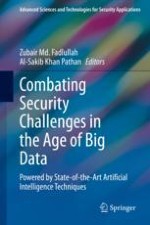This book addresses the key security challenges in the big data centric computing and network systems, and discusses how to tackle them using a mix of conventional and state-of-the-art techniques. The incentive for joining big data and advanced analytics is no longer in doubt for businesses and ordinary users alike. Technology giants like Google, Microsoft, Amazon, Facebook, Apple, and companies like Uber, Airbnb, NVIDIA, Expedia, and so forth are continuing to explore new ways to collect and analyze big data to provide their customers with interactive services and new experiences. With any discussion of big data, security is not, however, far behind. Large scale data breaches and privacy leaks at governmental and financial institutions, social platforms, power grids, and so forth, are on the rise that cost billions of dollars.
The book explains how the security needs and implementations are inherently different at different stages of the big data centric system, namely at the point of big data sensing and collection, delivery over existing networks, and analytics at the data centers. Thus, the book sheds light on how conventional security provisioning techniques like authentication and encryption need to scale well with all the stages of the big data centric system to effectively combat security threats and vulnerabilities. The book also uncovers the state-of-the-art technologies like deep learning and blockchain which can dramatically change the security landscape in the big data era.
